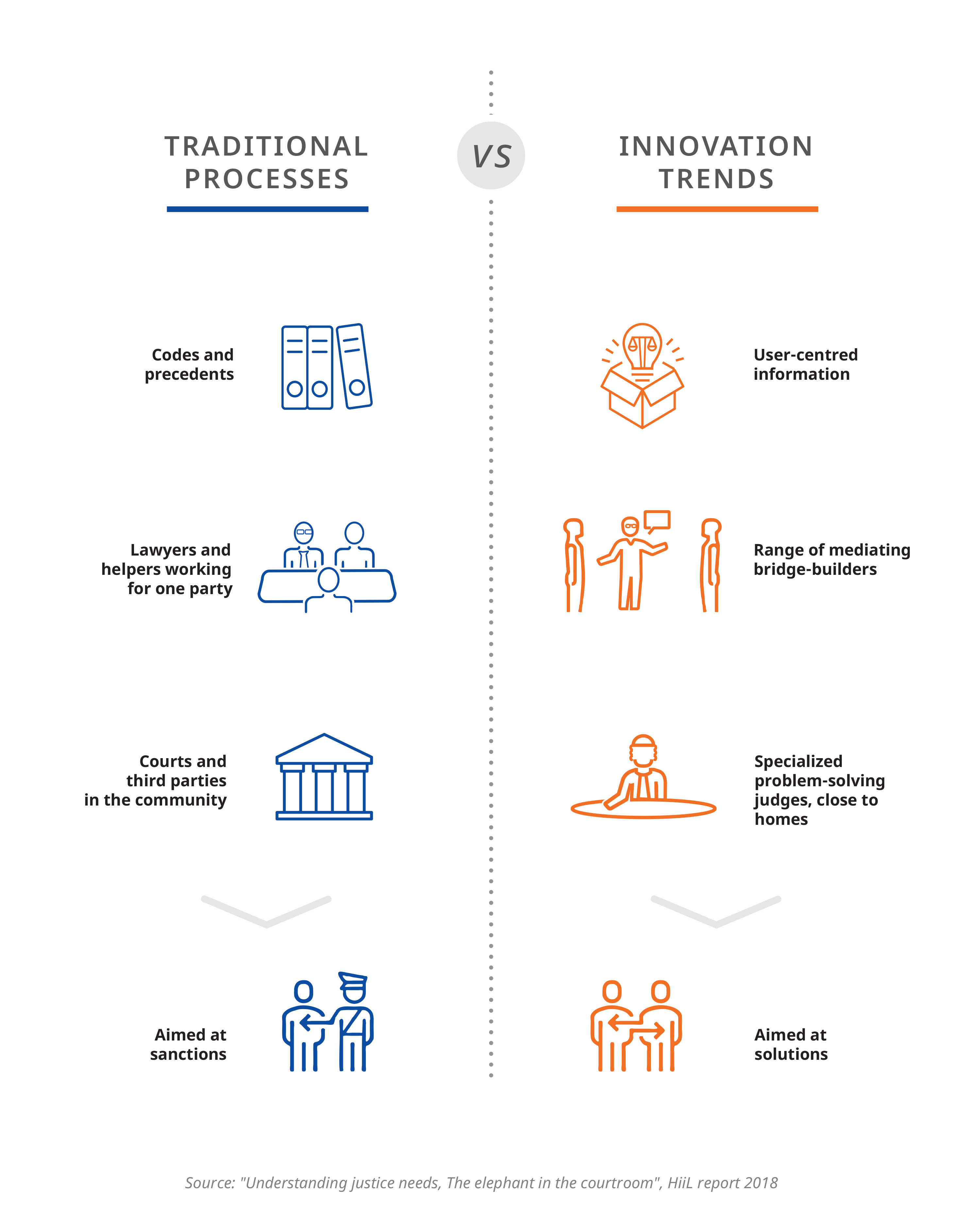Comprendre les besoins en matière de justice: L’éléphant dans le tribunal
For the first time, we quantify and pinpoint the yearly need for fair solutions. In this report, we estimate that each year, 1 billion people face a new and serious conflict. They experience violence, stress, loss of work and income or damage to key relationships. Data show that right now, people rely on litigation in overburdened courts or go to friends, lawyers and other helpers for informal solutions. Across countries studied, one third of people’s most serious problems are solved in time. The report shows how legal service providers and courts could embrace user-centred innovation and focus on seamless delivery of fair solutions.
Globally, innovation trends are encouraging, enabling a breakthrough
Online platforms are a promising way to support the supply of fair solutions at scale. Practical, local legal services do what works to build bridges and settle conflicts in communities. Judges are being released from courthouses and overly legalistic procedures so they can bring fair, authoritative solutions to the table when needed. The report suggests scenarios for scaling up these innovative approaches.
This report is part of a series of initiatives by international organizations that have joined forces to work on “equal access to justice to all” (Sustainable Development Goal 16.3), see the Task Force on Justice.
Questions addressed in the report:
- What are the justice needs of people?
Through survey data, we quantify the legal problems people encounter, as well as the impact on their lives.
- Do people get fair solutions?
The solution rates for problems, and the many problems still in process, show the size of the justice gap.
- How does the legal infrastructure serve people’s justice needs?
Many signals suggest that the adversarial legal system of courts and legal services is difficult to scale.
- What kind of solutions do people need and actually obtain?
Chapter 3 of the report describes how solutions look like and what kind of solutions people prefer.
- What works to deliver fair and effective solutions?
Three innovation trends support journeys to just, cooperative solutions, based on understanding.
- How can delivery of fair solutions, which now typically happens in local programs, be scaled to reach millions?
Quality and scale can be achieved by working evidence based, inspired by the health care sector, and using smart IT platforms.
- What are the barriers to change and how to overcome them?
The man-made barriers to innovation in the justice sector and scenarios for the major transformation that is needed.
- What are the costs of delivering equal access to justice to everyone?
Numbers regarding costs and citizens’ willingness to pay for adequate solutions.
- What can be done starting tomorrow?
New partnerships and how the demand side of the justice equation can be strengthened.

Based on the analysis in the report, we suggest 10 opportunities for major investment to close the justice gap
1. Organizing the voice of the users
2. An open ecosystem for justice sector innovation;
3. An exemplary city of problem-solving justice;
4. Scaling up paralegals and facilitators;
5. User-friendly courts with local reach;
6. Legal aid firms barring injustice;
7. Do-It-Yourself and Online Supported Dispute Resolution Platforms;
8. Fair solutions and designing agreements;
9. Eradicating one type of injustice;
10. The World Justice Organization ensuring quality.
70 000
people interviewed
15
countries where we work together with innovators
5
years of collecting data

